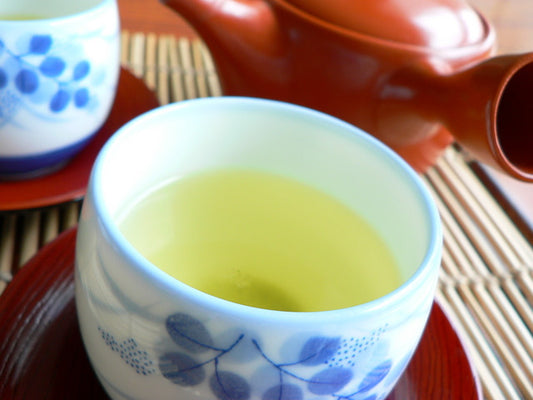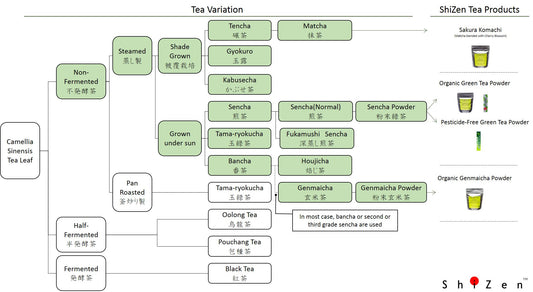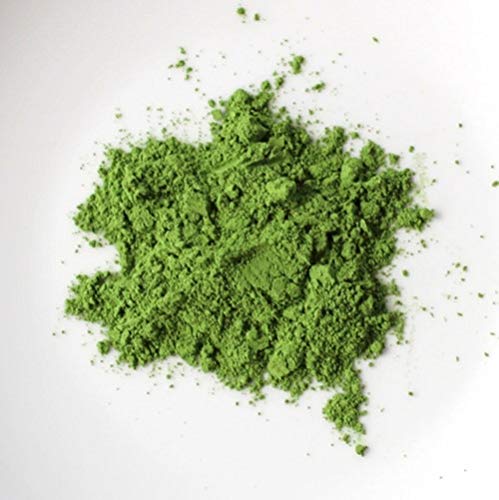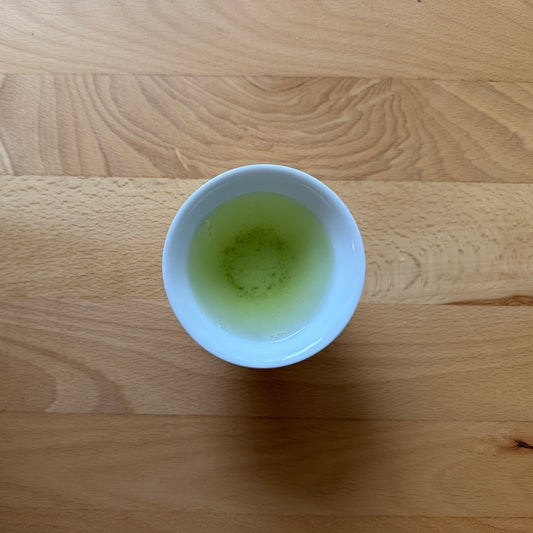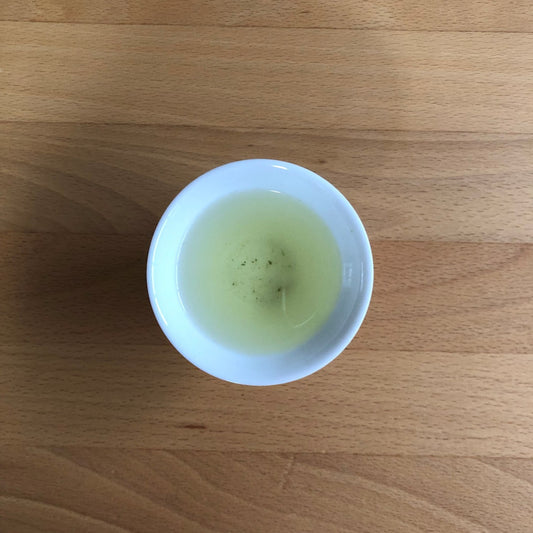From Tocha to Wabi-cha: How Matcha Became a Spiritual "Way"
Kamakura & Muromachi Periods: Connection with Zen & Permeation into Warrior Society
The tea seeds brought by Eisai were gifted to Priest Myoe of Kozan-ji Temple in Toganoo, Kyoto, where cultivation began. Tea from Toganoo was called honcha ("true tea") and was considered so high in quality that it was distinguished from tea from other regions, known as hicha ("non-tea"). This distinction between honcha and hicha shows that an awareness of tea's origin and quality already existed in this era, and can be seen as the seed that would later blossom into the meticulous attention to utensils and the tea itself in tocha tea competitions and the Way of Tea.
The custom of drinking tea gradually spread as a part of training in Zen temples (to stay awake during meditation and for tea rituals) and for its medicinal properties. From the late Kamakura period (c. 1185-1333) to the Muromachi period (c. 1336-1573), it permeated the warrior and aristocratic classes. In warrior society especially, matcha became linked with ceremony, and the way it was consumed became ritualized. In this process, extravagant tea gatherings using expensive imported Chinese tea utensils (karamono) were held, and tea took on an aspect of being a symbol of wealth and authority.
The acceptance of matcha in warrior society was not merely due to the influence of Zen, but was also deeply related to the aesthetic sense and social desires of the warrior class. While the spirituality and discipline of Zen resonated with the samurai's code of ethics, tea gatherings also functioned as social venues for warriors to display their cultural refinement and economic power. This mixture of dualistic elements—spirituality and materiality, simplicity and luxury—became an important theme in the later development of the Way of Tea and created the dynamism that led to the formation of wabi-cha.
The Rise of Uji Tea and the Formation of Tea Production Areas
Entering the Muromachi period (c. 1336-1573), the center of tea cultivation shifted to Uji. Uji was close to the capital, and its climate, known for the "Uji river fog," was ideal for growing tea. The third shogun of the Muromachi shogunate, Ashikaga Yoshimitsu, encouraged tea cultivation in Uji and ordered the creation of superior tea gardens, which came to be known as the "Uji Seven Famous Gardens" (Uji Shichimeien). Through this, Uji replaced Toganoo and established its position as the premier tea-producing region. The Uji Seven Famous Gardens—Mori, Iwai, Umoji, Okunoyama, Asahi, Biwa, and Kawashimo—gained such fame that they were mentioned in poetry. While most of these gardens have been lost, a portion of the Okunoyama garden still exists today.
The shogunate's patronage of Uji tea did more than just promote the production of high-quality tea; it also increased the authority of matcha and accelerated the development of a culture centered around it. The designation of a specific region as the shogunate's official tea garden guaranteed the quality of its tea and created a situation where consuming it became a status symbol. This was a significant turning point in the process of tea's elevation from a simple beverage to a luxury item with high cultural value. The foundation for Uji becoming synonymous with Japanese tea, especially matcha, for centuries to come was laid during this era.
From Tocha to Wabi-cha: The Establishment of Spirituality in the Way of Tea
During the Muromachi period (c. 1336-1573), a pastime called tocha (tea competition) became popular, mainly in warrior society. This was a contest to identify the origin and type of tea. Initially, it was a simple game of guessing the honcha from Toganoo, but it gradually became a lavish affair involving food, drink, and gambling. The craze grew so intense that it was eventually banned by the Kenmu Code, established by Ashikaga Takauji.
In parallel with the popularity of tocha, a movement emerged to seek spiritual depth in the tea ceremony. The pioneer of this movement was Murata Juko. Juko studied Zen under the monk Ikkyu Sojun and is said to have realized that "the law of the Buddha is found in the hot water for tea," seeking a state of sazen ichimi (the idea that Zen and tea are one). He advocated for the spirit of wabi-cha—finding beauty in simplicity and tranquility. In contrast to the prevailing trend of prizing extravagant imported Chinese tea utensils, he incorporated simple Japanese wares (such as Bizen and Shigaraki pottery). Juko's philosophy is outlined in his "Kokoro no fumi" (Letter of the Heart), said to have been addressed to one of his disciples.
While the ban on tocha might seem like a suppression of tea culture, it may have paradoxically caused people to turn their attention toward a more introspective and spiritual way of tea. With the element of excessive amusement removed, the inherent charm of tea and the quality of interaction it facilitated were re-examined. Murata Juko's advocacy of wabi-cha, against this historical backdrop, became a major turning point, elevating the tea ceremony from mere entertainment to a "Way" for cultivating the self.
Juko's wabi-cha was passed down to and further refined by Takeno Joo, who is said to have deepened the wabi aesthetic by incorporating the spirit of classical Japanese poetry into the tea ceremony.
In the next article, we will focus on Sen no Rikyu and the establishment of the tea ceremony.


